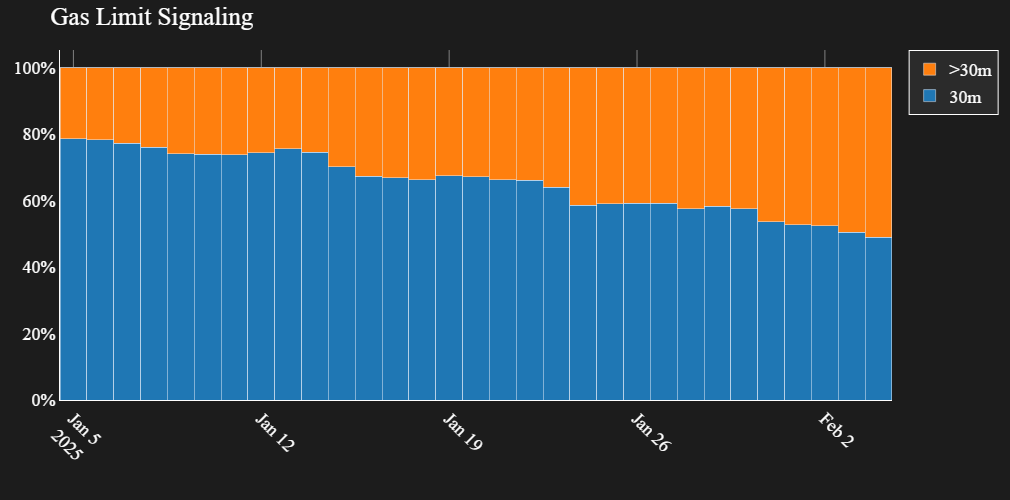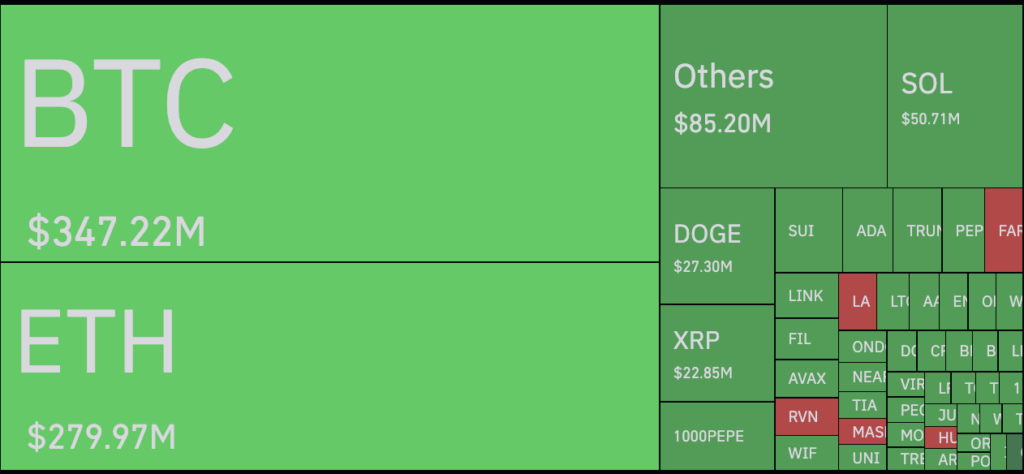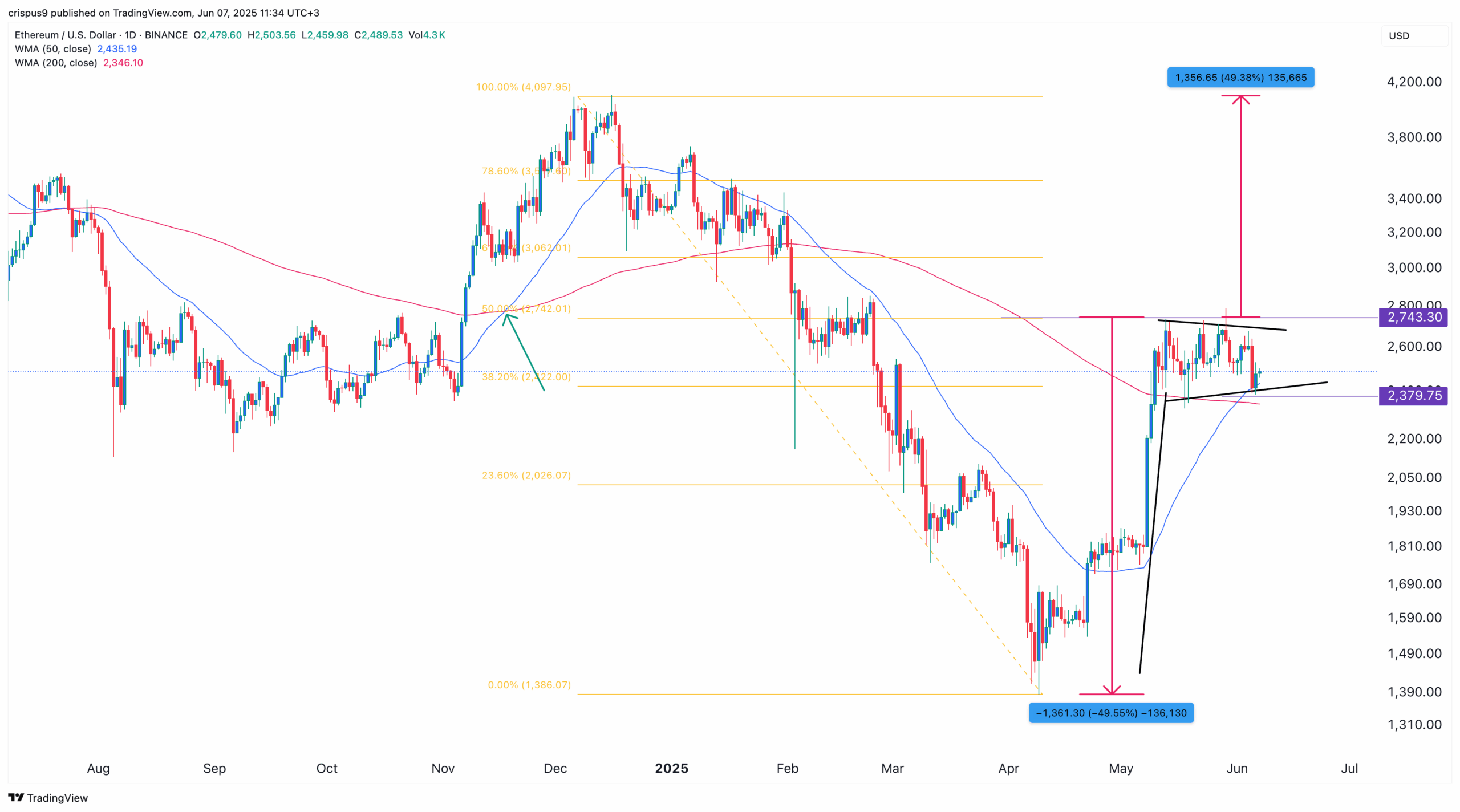The Ethereum network has recently raised its gas limit to more than 30 million with over 50% of validators indicating the change.
According to data from gaslimit.pics, the average gas limit in the Ethereum (ETH) network has nearly reached 32 million gas units within the past 24 hours, surpassing the previous 30 million gas limit. Traders on X expect it to go up even further to a max capacity of 36 million gas units.
This marks the first time the ETH network has enacted such a change since the implementation of its proof-of-stake consensus mechanism. At the time of writing, approximately 51.1% of validators approved the gas limit adjustment without a hard fork.
The last time Ethereum made adjustments to its gas limit price was back in 2021 when the network doubled its gas limit from 15 million to 30 million gas units.

What does a higher gas limit mean for Ethereum?
Within the Ethereum ecosystem, gas is the terms used to measure the amount of computational effort required to process transactions or smart contracts. Each block has a gas limit, which dictates the maximum amount of gas that can be consumed by all transactions within one block.
This means that by raising the gas limit, the network will be able to process more transactions per block, potentially enhancing the network’s productivity as it decreases congestion and helps blocks to process transactions faster. Not only that, the increase in capacity can also lead to lower transaction fees, benefiting crypto traders who frequently use the ETH network to transfer assets.
On the other hand, a higher gas limit could also lead to larger block sizes, which could potentially increase the computational load on nodes. Although this does not affect traders directly, it could result in more advanced hardware requirements for validators, potentially affecting network decentralization and security.




